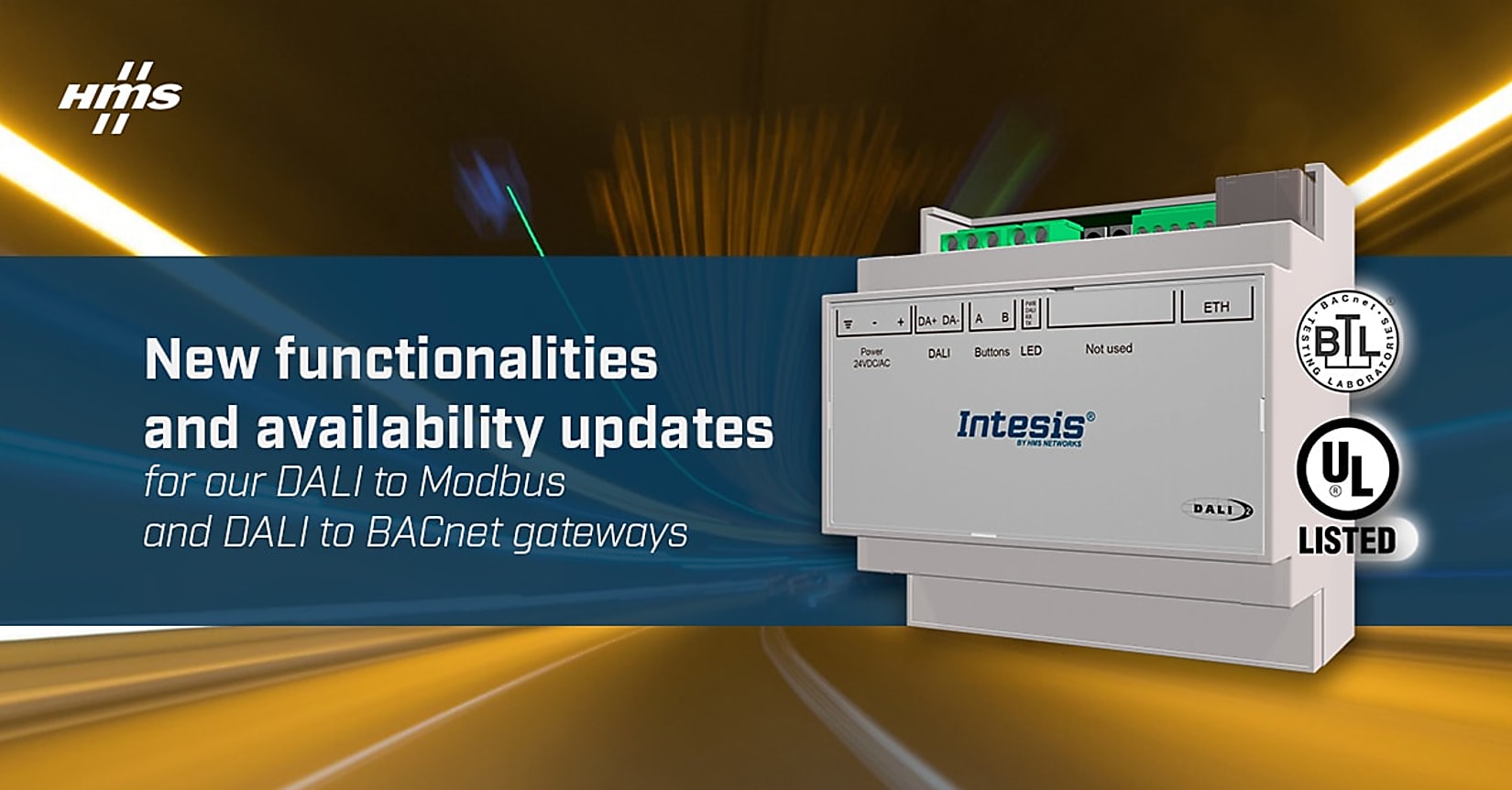Lighting Control systems are required to provide energy savings, enhanced comfort, and flexibility of the space for both facility managers and the users of a building.

DALI is a dedicated protocol for digital lighting control that enables the control of robust, scalable, and flexible lighting networks. The digital nature of DALI allows two-way communication between devices, so a device can report a failure, or answer a query about its status or other information. Wiring is relatively simple; DALI power and data is carried by the same pair of wires, without the need for a separate bus cable.
DALI standard is under constant evolution and as it grows, we also implement enhanced functionalities in our platforms to enable a wider integration of the DALI lighting network into the BMS offering control for different user types and devices.
Now including push buttons instances (part 301) and analogue inputs instances (part 302) of DALI-2 standard, our DALI to Modbus and DALI to BACnet gateways are back in stock after a couple of months.
This improvement also includes local DALI push button and Analogue input control, where push button and sliders instances can be managed locally in the gateway for a more efficient operation and shorter time between the input device action (like a pushed button) to the light change on the luminaires, keeping the BMS updated and under control for general actions if needed, and providing a more efficient use of the communication back to the BMS. This is an important step for our DALI protocol translators and currently available only for push buttons and analogue inputs.
The new Local Application Controller functionality is available in an updated MAPS template for easy commissioning. It is also backwards compatible to our BACnet and Modbus DALI-2 models and activated after a firmware update.